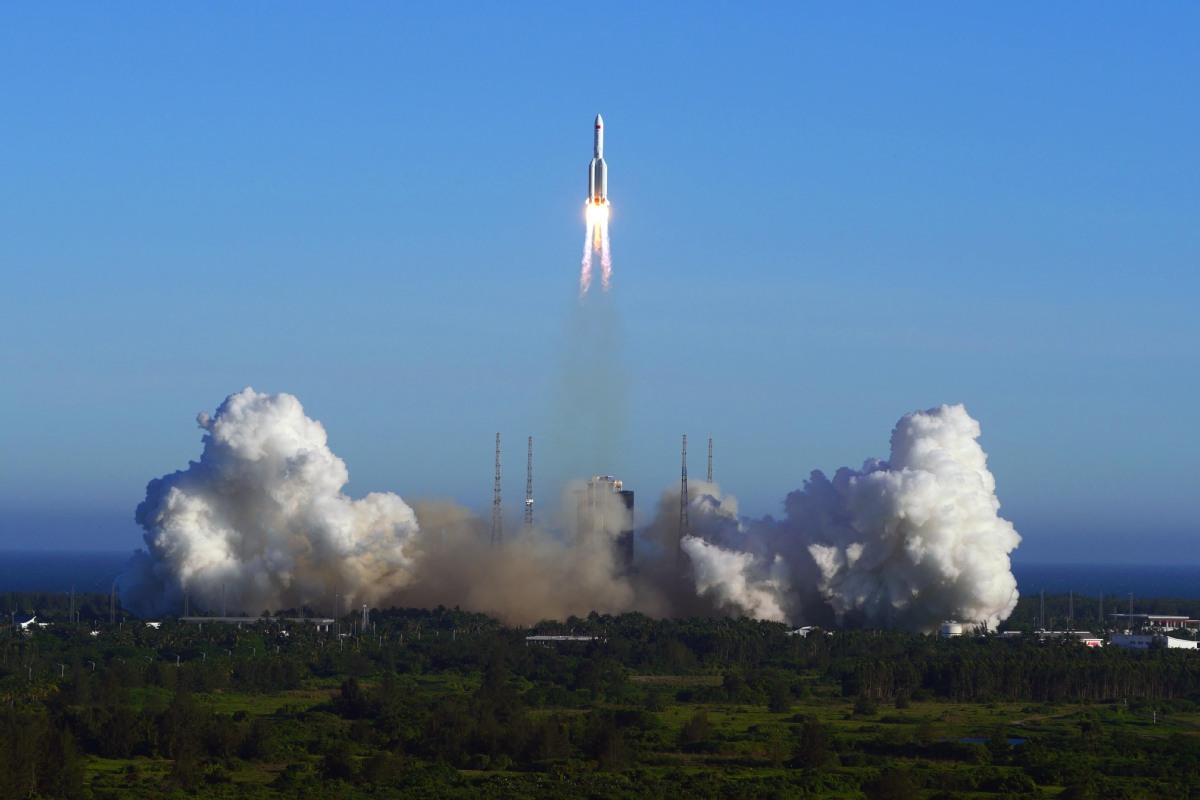
China's Long March 5B carrier rocket makes its debut flight from the Wenchang Space Launch Center in Hainan province on Tuesday. [Photo by Su Dong/chinadaily.com.cn]
The successful launch of a Long March 5B carrier rocket on Tuesday evening marks another milestone for China's ambitious space exploration program.
The maiden flight of the Long March 5B is especially encouraging given the country has just experienced two rocket launch failures in the first four months of the year, a Long March 7A carrier rocket on March 16, and a Long March 3B carrier rocket on April 9.
But more important than restoring the pride of the Long March family, the successful launch of the new heavy lift carrier rocket signals China is ready for the next part of its space program.
The Long March 5B is expected to play a key role in establishing a permanent space station, and Tuesday's rocket carried a next-generation spacecraft of the type that will carry astronauts to the space station that is due to be completed by 2022.
Compared with the Shenzhou family, the new-generation spaceship has seen revolutionary progress as it can carry six astronauts, double that of Shenzhou. Its structure is simplified, too, with only a service module and a return module, making it more stable.
The spacecraft also has a number of practical design characteristics with future missions in mind. Not only can it transport passengers and cargo at the same time — for example, with three astronauts on board, it is possible to carry about 500 kilograms of cargo — but it also has "two-way" logistics capability, which means it will also be able to bring cargo from the space station back to Earth.
It is also designed to serve different orbits. In other words, it will not only shuttle astronauts to and from China's low-orbit space station, but also carry them to and from the moon.
The current mission is to test the key technologies of the new spaceship such as control of its re-entry into the atmosphere, the effectiveness of its heat shielding and recovery technology.
The new spacecraft is intended to be as cost-effective as possible, and the new heat insulation material is detachable rather than being integrated with the spacecraft, so it is easy to replace after a flight, while a group umbrella and air bag system is being deployed to better protect the spacecraft itself from damage and so enable its repeated use.
It is planned that each return module will be able to be used 10 times, thereby reducing the costs of manned missions.
If all the trials go well, it is expected that there will be about 12 flight missions to construct the space station.
The launch is especially noteworthy as the novel coronavirus outbreak meant that preparations for the launch, and the launch itself, were carried out by a smaller team than planned. That it was carried out successfully is hopefully an auspicious beginning for China's next round of space missions.
China's Long March 5B carrier rocket made its debut flight from the Wenchang Space Launch Center in Hainan province o...